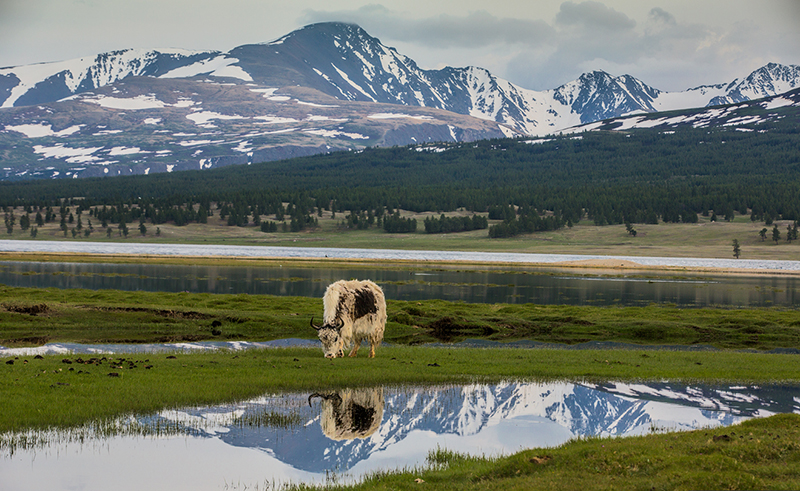Mongolia’s vast and diverse landscapes offer some of the most pristine and exhilarating hiking and trekking experiences in the world. From the rugged Altai Mountains in the west to the serene Lake Khövsgöl in the north, here’s your comprehensive guide to exploring Mongolia on foot.
Best Hiking and Trekking Seasons
Summer (June to August):
- Ideal Conditions: Long daylight hours and warm temperatures make summer the peak season for hiking and trekking.
- Popular Routes: Explore the Altai Tavan Bogd National Park, the Gobi Gurvansaikhan National Park, and the Khövsgöl Lake National Park.
Fall (September to October):
- Mild Weather: Cooler temperatures and colorful autumn foliage make fall a pleasant time for trekking.
- Recommended Trails: Trek through the Orkhon Valley or explore the Khustain Nuruu National Park near Ulaanbaatar.
Essential Gear and Preparation
1. Clothing:
- Layering: Pack lightweight, moisture-wicking base layers, insulating mid-layers, and waterproof outer layers.
- Footwear: Sturdy hiking boots with ankle support are essential. Break them in before your trip to avoid blisters.
- Headwear: Sun hat, sunglasses, and a warm beanie for colder nights.
2. Backpack:
- Capacity: Choose a backpack with enough capacity to carry essentials like water, snacks, a first aid kit, and extra clothing layers.
- Rain Cover: Ensure your backpack has a rain cover to protect gear during unexpected showers.
3. Navigation:
- Maps and GPS: Carry detailed topographic maps and a GPS device or smartphone with offline maps.
- Guidebook: Consider a guidebook or trail descriptions for route planning and points of interest.
4. Camping Gear:
- Tent: Lightweight and weather-resistant tent suitable for the conditions you expect to encounter.
- Sleeping Bag: Choose a sleeping bag rated for the temperatures you anticipate during your trek.
- Cooking Equipment: Lightweight stove, fuel, and cookware for preparing meals on the trail.
5. Food and Water:
- Hydration: Carry a reusable water bottle or hydration pack. Ensure access to clean water sources along your route.
- Nutrition: Pack lightweight, high-energy snacks like trail mix, energy bars, and dried fruits.
6. Safety and First Aid:
- First Aid Kit: Include bandages, antiseptic wipes, pain relievers, blister treatment, and any personal medications.
- Emergency Supplies: Carry a whistle, flashlight, multi-tool, and emergency blanket for unexpected situations.
- Travel Insurance: Ensure your insurance covers hiking and trekking activities, including medical evacuation if necessary.
Top Hiking and Trekking Routes
1. Altai Mountains:
- Altai Tavan Bogd National Park: Trek to the base camp of Khuiten Peak, Mongolia’s highest summit, or explore the stunning Potanin Glacier.
- Difficulty: Challenging, suitable for experienced trekkers due to high altitude and rugged terrain.
2. Gobi Desert:
- Gobi Gurvansaikhan National Park: Hike to the towering sand dunes of Khongoryn Els or explore the dramatic Yolyn Am canyon.
- Difficulty: Moderate, with varying terrain from desert dunes to rocky canyons.
3. Lake Khövsgöl:
- Khövsgöl Lake National Park: Trek along the shores of Mongolia’s largest freshwater lake, surrounded by lush forests and mountains.
- Difficulty: Easy to moderate, with options for shorter day hikes or multi-day treks.
4. Orkhon Valley:
- Orkhon Valley National Park: Follow ancient nomadic routes past waterfalls and volcanic landscapes, exploring historical sites along the way.
- Difficulty: Moderate, suitable for beginners with diverse scenery and cultural highlights.
5. Khustain Nuruu National Park:
- Takhiin Tal: Trek through the protected area to observe wild takhi (Przewalski’s horses) in their natural habitat.
- Difficulty: Easy, suitable for day hikes with opportunities for wildlife observation.
Cultural and Environmental Considerations
1. Respect Local Customs:
- Nomadic Encounters: If interacting with nomadic families, respect their customs and seek permission before entering their camps.
- Leave No Trace: Practice Leave No Trace principles to minimize your impact on the environment. Pack out all waste and avoid damaging vegetation.
2. Wildlife Awareness:
- Wildlife Viewing: Observe wildlife from a distance without disturbing their natural behavior. Carry binoculars for safe viewing.
3. Weather Awareness:
- Weather Changes: Mongolia’s weather can be unpredictable. Be prepared for sudden temperature drops, high winds, and occasional rain or snow.
Guided Tours and Local Resources
1. Guided Tours:
- Benefits: Joining a guided trek with a local tour operator ensures safety, provides cultural insights, and supports local communities.
- Local Knowledge: Guides offer expertise on routes, safety precautions, and wildlife behavior.
2. Local Resources:
- Visitor Centers: Obtain trail maps, permits, and up-to-date information from visitor centers or national park offices.
- Emergency Contacts: Carry contact information for local emergency services, national park authorities, and your embassy.
Hiking and trekking in Mongolia offer unparalleled opportunities to explore pristine wilderness and experience nomadic culture firsthand. Whether you’re scaling mountain peaks in the Altai Range or hiking along the shores of Lake Khövsgöl, proper preparation, respect for nature, and cultural awareness will enhance your adventure. Plan carefully, pack responsibly, and embark on an unforgettable journey through Mongolia’s breathtaking landscapes.
